Wow ! 132 years and perfectly aligned ! Are these photos taken from an upper floor in a building ?
Wow ! 132 years and perfectly aligned ! Are these photos taken from an upper floor in a building ?
@oliver42
Before photo was take from balcony - first high tanement house on the left side on this photo https://tinyurl.com/yxm8lxar. Now this building is in terrible technical condition please see google maps link https://tinyurl.com/yycs6pyf, using the balcony is risky, that's why i used a drone.
@oliver42
Before photo was take from balcony - first high tanement house on the left side on this photo https://tinyurl.com/yxm8lxar. Now this building is in terrible technical condition please see google maps link https://tinyurl.com/yycs6pyf, using the balcony is risky, that's why i used a drone.
Fetching images...
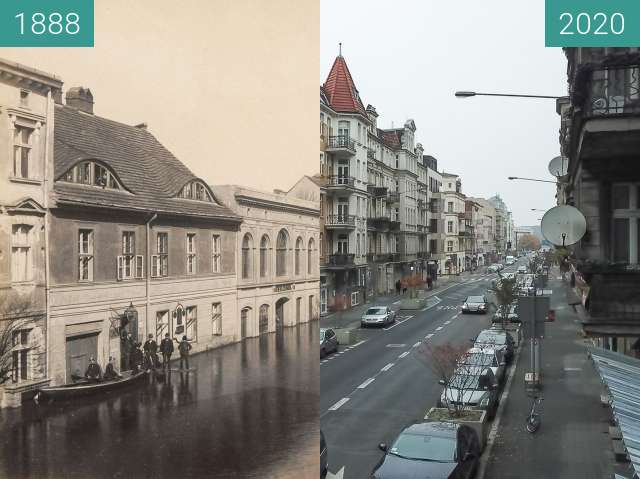
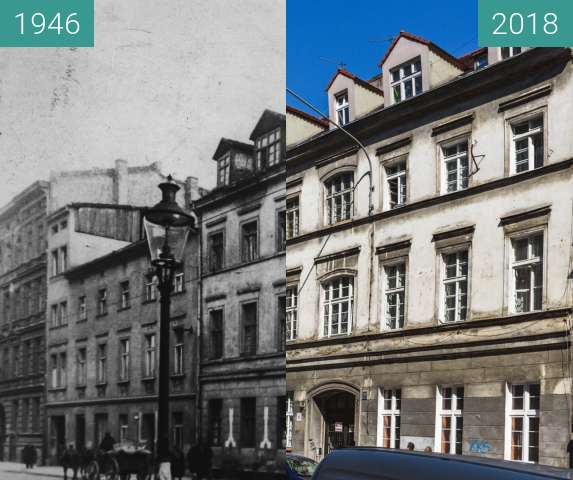
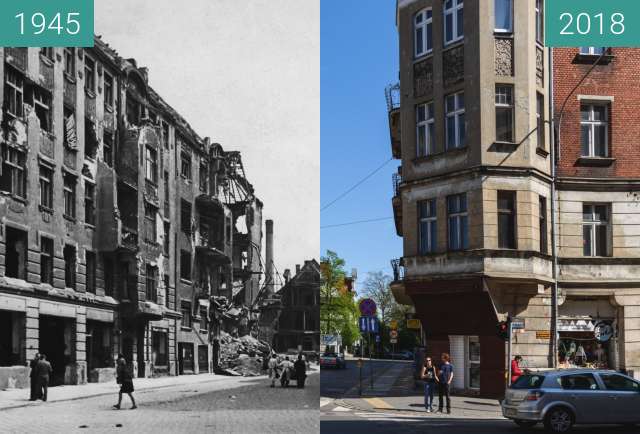
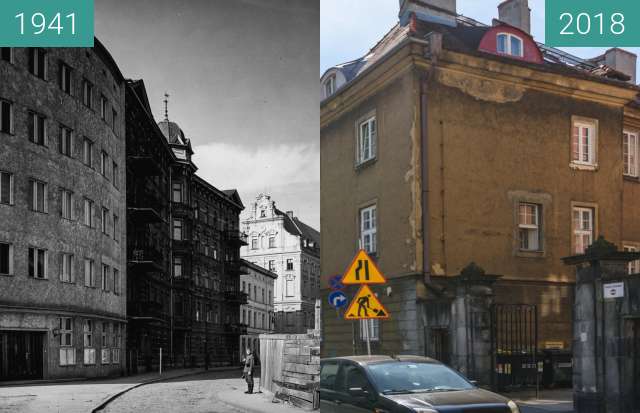
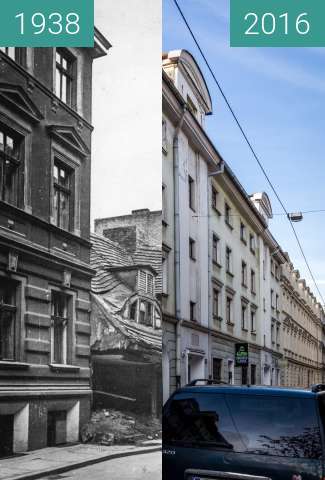
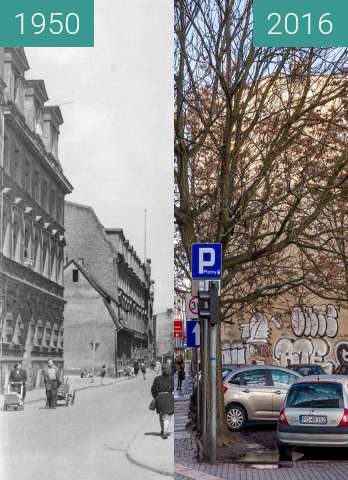
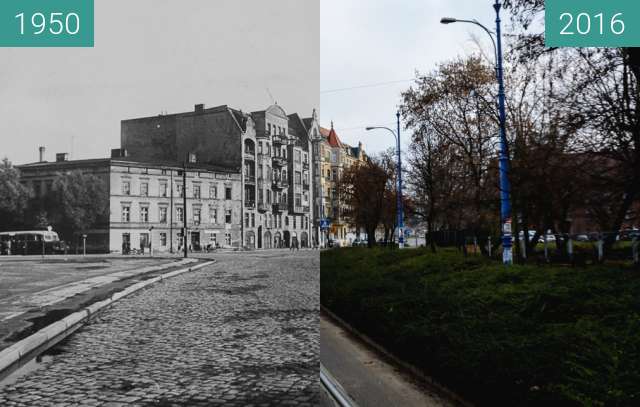
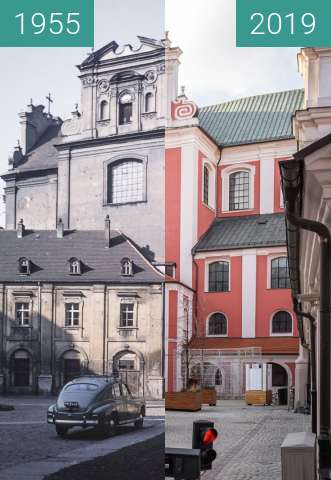
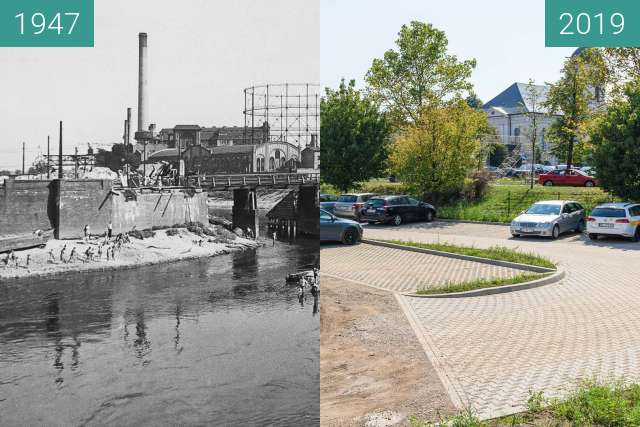
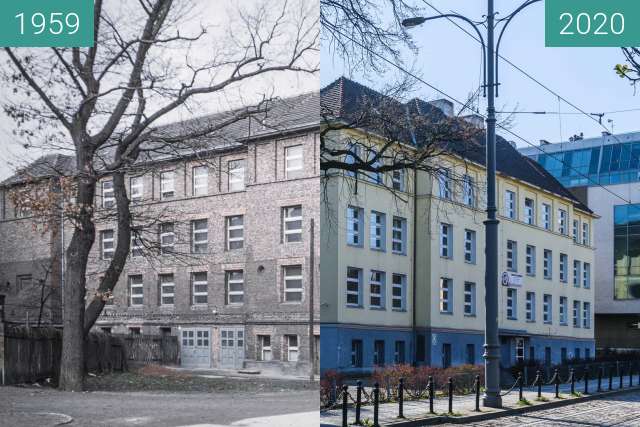
Powódź w Poznaniu w 1888 – powódź, która nawiedziła Poznań w 1888, będąc prawdopodobnie trzecim co do wielkości zalewem w dziejach miasta.
Powódź nastąpiła w wyniku gwałtownych roztopów, wywołujących kulminacyjną falę na Warcie. Stan wody wyniósł wtedy 650 cm, na wodowskazie na Chwaliszewie. Zalaniu uległy tereny poniżej 58,0 m n.p.m. Stan wody upamiętnia tabliczka w kościele Bożego Ciała na Piaskach oraz na ul. Długiej 1/2 (jej górna krawędź odpowiada rzędnej 58,225 m n.p.m., a dolna 58,135 m n.p.m.). Podczas powodzi woda zalała: Chwaliszewo, Śródkę, Stary Rynek, Plac Bernardyński, a także podeszła pod kościół Bożego Ciała, ulicę Strzelecką, Drogę Dębińską i Garbary. Ogółem zalanych zostało niecałe osiemset budynków zamieszkałych przez 22.000 osób.
Jej bezpośrednim następstwem była epidemia tyfusu.
9 kwietnia przybyła do Poznania cesarzowa Wiktoria, aby przekazać mieszkańcom wyrazy współczucia od siebie oraz swojego chorego męża – Fryderyka III. Cesarzowa przybyła koleją na dworzec główny, a potem udała się na Święty Marcin oraz do baraków wzniesionych specjalnie dla powodzian[4]. Wynikiem wizyty było przystąpienie do opracowania kompleksowego planu zabezpieczającego Poznań przed powodziami i uczynienie z Warty efektywnego szlaku żeglugowego.
Źródło: https://pl.wikipedia.org/wiki/Pow%C3%B3d%C5%BA_w_Poznaniu_(1888)
Flood in Poznań in 1888 - the flood that hit Poznań in 1888, probably the third largest flood in the history of the city.
The flood was caused by sudden thaws, causing the culminating wave on the Warta River. The water level was then 650 cm, on the water gauge in Chwaliszewo. Areas below 58.0 m above sea level were flooded. The state of the water is commemorated by a plaque in the Corpus Christi church in Piaski and at ul. Długa 1/2 (its upper edge is 58.225 m above sea level, and the lower edge is 58.135 m above sea level). During the flood, the water flooded: Chwaliszewo, Śródka, Stary Rynek, Plac Bernardyński, and also came to the Church of Corpus Christi, Strzelecka Street, Droga Dębińska and Garbary. In total, nearly eight hundred buildings inhabited by 22,000 people were flooded.
Its immediate consequence was the typhus epidemic.
On April 9, Empress Victoria came to Poznań to express sympathy for herself and her sick husband - Frederick III. The Empress came by rail to the main railway station, and then went to Saint Martin and to the barracks erected especially for the flood victims [4]. The result of the visit was the commencement of the development of a comprehensive plan to protect Poznań against floods and making the Warta an effective shipping route.
Source: https://pl.wikipedia.org/wiki/Pow%C3%B3d%C5%BA_w_Poznaniu_(1888)